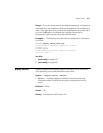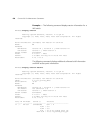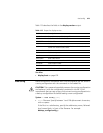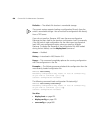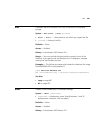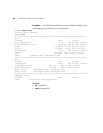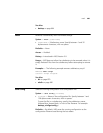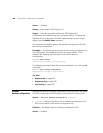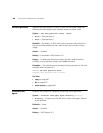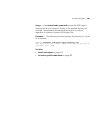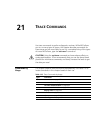
684 CHAPTER 20: FILE MANAGEMENT COMMANDS
restore Unzips a system archive created by the backup command and copies the
files from the archive onto the switch.
Syntax
restore system [tftp:/ip-addr/]filename [all |
critical]
Defaults — Critical.
Access — Enabled.
History —Introduced in MSS Version 3.2.
Usage — If a file in the archive has a counterpart on the switch, the archive
version of the file replaces the file on the switch. The restore command does
not delete files that do not have counterparts in the archive. For example, the
command does not completely replace the user files area. Instead, files in the
archive are added to the user files area. A file in the user area is replaced only
if the archive contains a file with the same name.
Note: If the archive’s files cannot fit on the switch, the restore operation
fails. 3Com recommends deleting unneeded image files before creating
or restoring an archive.
The backup command stores the MAC address of the switch in the
archive. By default, the restore command works only if the MAC address
in the archive matches the MAC address of the switch where the restore
command is entered. The force option overrides this restriction and
allows you to unpack one switch’s archive onto another switch.
CAUTION: Do not use the force option unless you are certain you want
to replace the switch’s files with files from another switch. If you restore
one switch’s system files onto another switch, you must generate new
key pairs and certificates on the switch.
Examples — The following command restores system-critical files on a
switch, from archive sysa_bak.
WX1200# restore system tftp:/10.10.20.9/sysa_bak
success: received 11908 bytes in 0.150 seconds [ 79386
bytes/sec]
success: restore complete.




